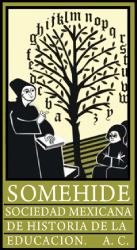A Review of the Porfirian School Patents: Materials, Findings and Possibilities for Analysis
DOI:
https://doi.org/10.29351/rmhe.v8i15.206Keywords:
school technology, patents of invention, Porfiriato, inventors, objectsAbstract
This paper analyzes the patents for school materials which were registered in Porfirian Mexico (1876- 1911). For this aim, the first part examines the treatment that this source has had in the history of education, the documents that contain the patent files, and the kind of data that these materials contain. Beyond, the second part analyzes the findings that reveal the patenting rhythms, invention trends and the sociodemographic profiles of those people who registered inventions for school materials during the years of the Porfirian regime. Finally, this paper opens the discussion about the possibilities for analysis and interpretation that these patents grant for the history of education, as well as for the understanding of the educational scenario of the “Porfiriato”.
References
Referencias
Basalla, George (1991), La evolución de la tecnología, México, Crítica-Conaculta.
Bazant, Mílada (1995), Historia de la educación durante el Porfiriato, México, El Colegio de México.
Beatty, Edward (1996), “Invención e innovación: ley de patentes y tecnología en el México del siglo XIX”, Historia Mexicana, vol. XLV núm. 3, pp. 567-619.
Beatty, Edward (2001), Institutions and Investment. The Political Basis of Industrialization in México Before 1911, Stanford, Stanford University Press.
Beatty, Edward (2015), Technology and search for progress in modern Mexico, Oakland, University of California Press.
Beatty, Edward y Patricio Sáiz (2007), “Propiedad industrial, patentes e inversión en tecnología en España y México (1820-1914)” en Rafael Dobado, Aurora Gómez y Gabriela Márquez (eds.), México y España: ¿historias económicas paralelas?, México, Fondo de Cultura Económica, pp. 425-467.
Bloor, David (1976), Knowledge and social imagery, Londres, Routledge & Kegan.
Callon, Michel (1986), “Domestication of the Scallops and the Fishermen of St. Brieuc Bay: Some Elements of the Sociology of Translation” en John Law (ed.), Power, Action and Belief: New Sociology of Knowledge, Londres: Routledge & Kegan, pp. 169-233.
Cutcliffe, Stephen H. (2003), Ideas, máquinas y valores. Los estudios de Ciencia, Tecnología y Sociedad, Barcelona, Anthropos, 2003.
Dussel, Inés (2019), “La cultura material de la escolarización: reflexiones en torno a un giro historiográfico”, Educar em Revista, vol. 35, núm. 76, pp. 13-29.
Foucault, Michel (2003), Hay que defender la sociedad. Curso del Collège de France (1975-1976), Madrid, Ediciones Akal.
Gardiner, C. H. (1949), “Las patentes en México de 1867 a 1876”, El Trimestre Económico, vol. XVI, núm. 4, pp. 576-599.
González, Moisés (1993), Los extranjeros en México y los mexicanos en el extranjero, 1821-1970, México, El Colegio de México.
Granja, Josefina (2004), Métodos, aparatos y máquinas para la enseñanza en México en el siglo XIX. Imaginarios y saberes populares, México, Pomares-UNAM.
Latour, Bruno (2005), Reensamblar lo social. Una introducción a la teoría del actor en red, Buenos Aires, Manantial.
Layton, Edwin (1977), “Conditions of Technological Development” en Ina Spiegel-Rösing y Derek de Solla Price (eds.), Science, Technology and Society. A Cross-Disciplinary Perspective, Londres, SAGE Publications, pp. 197-222.
Loyo, Engracia y Staples, Anne (2010), “Fin del siglo y de un régimen” en Dorothy Tanck de Estrada (coord.), Historia mínima de la educación en México, México, El Colegio de México, pp. 127-152.
Matute, Álvaro (2000), “Heurística e historia” en Ambrosio Velasco (coord.), El concepto de heurística en las ciencias sociales y las humanidades, México, Siglo XXI-UNAM, pp. 149-163.
Mendoza, Vandari M. (2012), Privilegios e invenciones. Las patentes mexicanas de 1821 a 1876, Morelia, Consejo Estatal de Ciencia, Tecnología e Innovación de Michoacán.
Mendoza, Vandari M. (2016), “La vida en el aula de los artefactos pedagógicos. Inventos para la ense- ñanza objetiva en México, 1876-1910” en Paulí Dávila y Luis María Naya (coords). Espacios y patrimonio histórico-educativo, Donostia, Erein, pp. 499-511.
Mendoza, Vandari M. (2017), “En constante movimiento. Dos episodios sobre la circulación de saberes tecnológicos a través de la invención de las máquinas desfibradoras de henequén, siglo XIX”, Tzint-zun. Revista de estudios históricos, núm. 66, pp. 67-105.
Mendoza, Vandari M. (2018a), “La movilidad del conocimiento tecnológico a través del sistema de patentes. Posibilidades heurísticas en las patentes mexicanas, 1832-1911”, Revista Inclusiones, vol. 5, núm. 4, pp. 137-151.
Mendoza, Vandari M. (2018b), Las patentes de invención mexicanas. Instituciones, actores y artefactos. Zamora, El Colegio de Michoacán.
Noble, David (1984), Forces of Production: A Social History of Industrial Automation, Oxford, Oxford University Press.
Oldenziel, Ruth (1999), Making Technology Masculine. Men, Women and Modern Machines in America, 1870-1945, Amsterdam, Amsterdam University Press.
Silver, Harold (1992), “Knowing and not knowing in the history of education”, History of Education, vol. 21, núm. 1, pp. 97-108.
Sáiz, Patricio (2002), “Los orígenes de la dependencia tecnológica española. Evidencias en el sistema de patentes”, Economía e Industria, núm. 343, pp. 83-95.
Torre, Juan de la (1903), Legislación de patentes y marcas, México, Antigua Imprenta de Murguía. Wajcman, Judith (2006), El Tecnofeminismo, Madrid: Ediciones Cátedra.
Archivos
Archivo General de la Nación, Ciudad de México, Fondo: Patentes y Marcas.
Downloads
Published
How to Cite
Issue
Section
License
Copyright (c) 2020 Vandari M. Mendoza

This work is licensed under a Creative Commons Attribution-NonCommercial-ShareAlike 4.0 International License.









